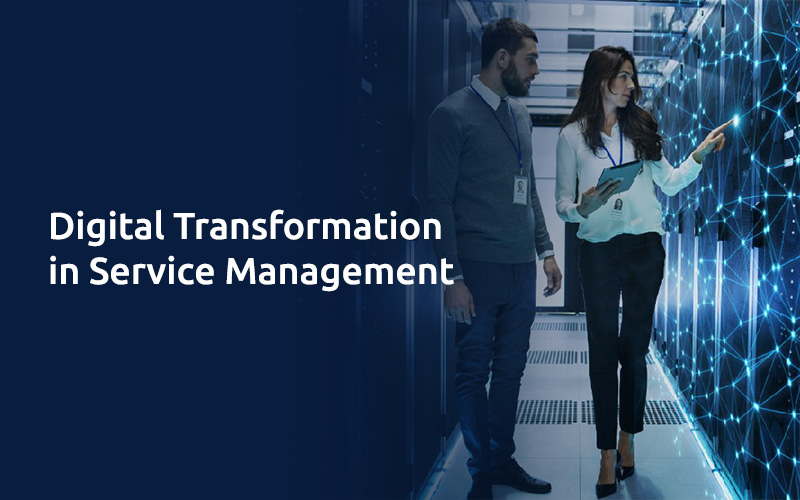
Digital Transformation in Service Management
Digital transformation is a concept that has been in to discussions for a decade. Yet, most of the enterprises are lost in translation of the effect of modernization on their organizations. Taking a look at the definition, Gartner defines digital transformation as digital technologies to support overall business strategy. Thus, we can safely say digital transformation bridges the gap between digital customer and analog businesses.
Digital Transformation:
Digital transformation is all about organizations leveraging digital technology and information to deliver value to their customers and employees. In other words, digital transformation deals with:
- Technology Integration to create value for business
- Digital Cultural Shift for data driven decision making and efficient processes
The complete organization needs to shifts into a digital mindset in order for digital transformation to work otherwise it gets disrupted by companies that are ahead in the digital culture. Transformation is not achieved in a day, it takes strategy, time and change, and this is where ITSM joins in.
Role of ITSM in Digital Transformation
CIOs have a new role in the enterprises when it comes to digital transformation. In 2020, CIOs implement the business model and digital first culture to create digital products and user-employee satisfaction. Digital needs to be the center-point of all the businesses. With so many CIOs focusing on strategy, the major factor is bridging the gap in ITSM from each department. The following are the focused points on role of ITSM in digital transformation:
- Improved agility for delivery services
An ITSM (Information technology Service Management) Platform can support an organization in becoming more agile in order to become proactive instead of reactive in nature. Agility can mean either as been able to roll out new versions and technology or it can also mean predicting risk faster and quicker to take corrective actions efficiently. Automation also plays an important role in making business process more agile as it eliminates redundant and repetitive tasks. - Transforming user journey
Users are the core of any organization, thus meeting the needs of user through modernized IT Service management (ITSM) and providing a positive experience to both customer and employees is an essential in the Digital transformation journey. The personalized approach taken through ITSM platform with the help from self-service platforms and self-help chat-bots boosts employee productivity and promotes adoption of new digital technologies. AI and automation platforms also optimize the work time and experiences. - Managing new complex technologies
Having a modern IT infrastructure is important when it comes to managing new implemented technologies that give an opportunity for the employees to be more productive and efficient. The Tools for this when built through a single platform brings about more usable UI and facilitates delivery of service to employees or customer more effective.
But ITSM is more than software management; it set up a customized framework for the implementation of digital strategies while helping support change in all areas of the organization. IT Service Management (ITSM) is one management approach that is widely used by IT today and it’s a proven and effective method for delivering value added services to end users. ITSM helps organizations implement new services and process improvements that are based on automation, collaboration and transparency exactly what’s involved in moving from an analog to a digital world.
